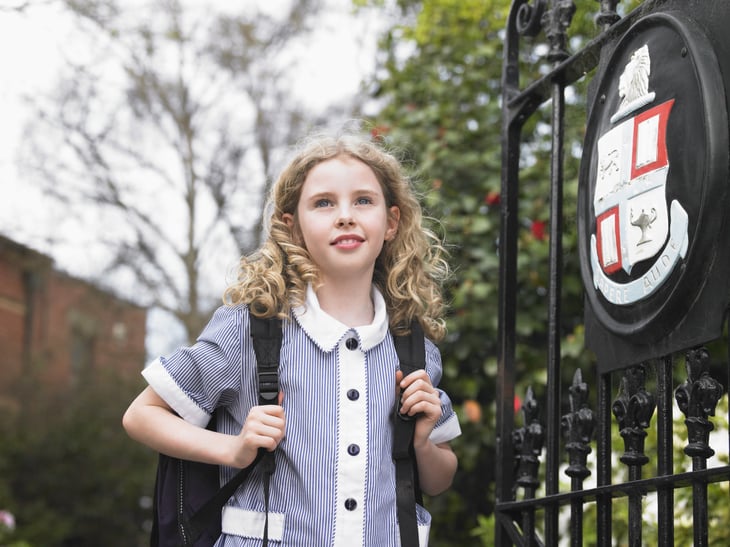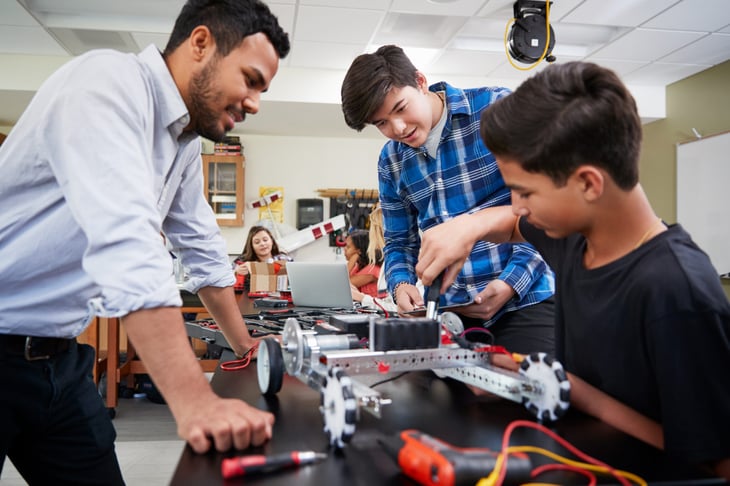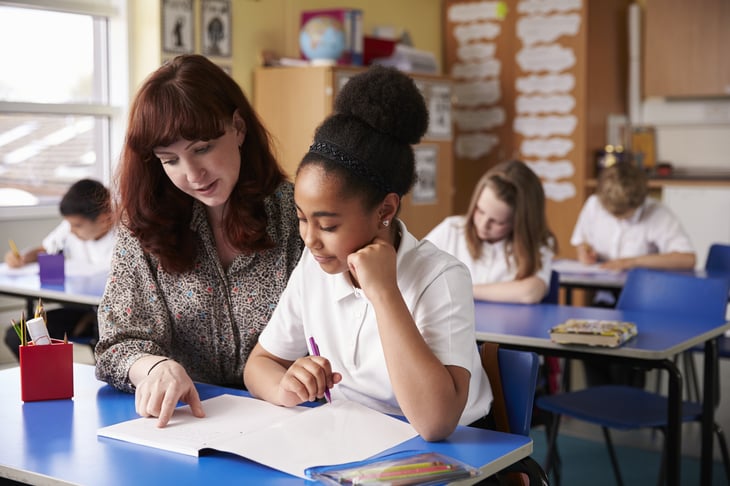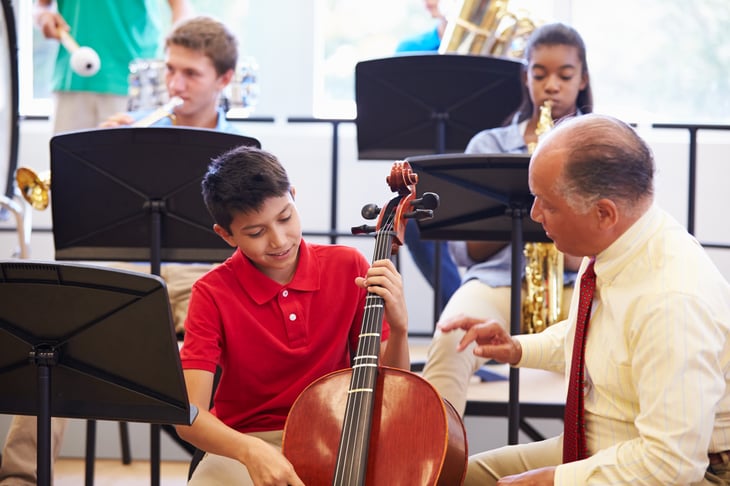
Editor's Note: This story originally appeared on The Penny Hoarder.
Getting the state to pick up the tab on your kid’s private school tuition sounds like a pipe dream, but it’s becoming increasingly common as more states across the country launch school voucher programs.
But even with state financial assistance, can your family really afford to pay private school tuition?
Let’s take a closer look at how voucher programs work, what these education funds cover and the eligibility requirements associated with using public funds to attend a private school.
What Are School Vouchers?

A school voucher program provides funds usually earmarked for public education to individual students or families who want to attend a private or religious school.
In some states, private school vouchers can also be used to reimburse the costs of homeschooling.
Public schools and charter schools are both part of the public education system and funded by taxpayer dollars.
Private school choice programs offer an alternative to lower-income students who wish to put some of those public dollars toward a private education.
How Do School Vouchers Work?

Figuring out how to use vouchers in your state can be a confusing endeavor, with states offering varying amounts to voucher recipients under different conditions. Be aware that some states also have stipulations that vouchers can’t be used at private religious schools.
Depending on the state, education savings accounts (ESAs) are also available in conjunction with or instead of school voucher programs. These accounts put public funds onto a government-issued debit card. Families can then use the card to cover the costs of private school, online learning, tutoring, community college and other educational services and materials.
Some states offer private school scholarships that use alternative funding sources. Rather than being directly funded by the state, these tax credit scholarships are paid by private donors who then get reimbursed with a tax credit.
Who Is Eligible for School Vouchers?

Who is eligible to use school vouchers depends on the state you live in. For instance, some states offer vouchers if you’re in a school district with poorly performing schools. Other states confine vouchers to special education students or other disadvantaged students.
In the case of tuition tax credits, some states structure scholarship programs based on student achievement or student test scores.
Do Vouchers Cover the Cost of Private School Tuition?

No matter the eligibility requirements or how the voucher program is structured, one thing is clear. School voucher programs rarely cover the entire cost of attending private schools.
According to the Education Data Initiative, the average cost of attending one of 22,440 private K-12 schools in the United States is $12,350 per year, with religious schools offering notably lower tuition rates than nonsectarian schools.
That puts private school tuition at a whopping 18% of the average household income, according to the US Census Bureau.
States That Offer Voucher Programs to Pay for Private Schools

Fifteen states, as well as the District of Columbia, currently offer some sort of school voucher program. Five of these voucher programs are for special needs students only.
Additionally, three of the voucher programs in New England states limit eligibility to small towns without public schools.
That leaves just seven states where lower-income students qualify for traditional school voucher programs.
However, the list of voucher states is expected to rapidly expand in the coming year as more educational choice legislation is enacted. Funding is variable and often awarded based on family needs and income.
Following is a list of private school voucher programs organized by state, with information about funding and eligibility.
- Arkansas: Succeed Scholarship; $7,000+/year; Kids with disabilities, in foster care, military. Learn more.
- Florida: Empowerment Scholarship; $6,500+/year, $750 transportation grants; Low and middle income, students with disabilities. Learn more.
- Georgia: Special Needs Scholarship; $5,000+/year; Students with disabilities. Learn more.
- Indiana: Choice Scholarship Program; $5,000+/year; Low- and middle-income families. Learn more.
- Louisiana: School Choice Program; $2,500+/year; Students with disabilities in eligible districts. Learn more.
- Maine: Town Tuitioning Program; Variable; Students who live in towns without public schools. Learn more.
- Maryland: BOOST Program; $3,000+/year; Low-income students. Learn more.
- Mississippi: Nate Rogers Scholarship, Dyslexia Therapy; $5,500+/year; Students with speech therapy or dyslexia. Learn more.
- New Hampshire: Town Tuitioning Program; $11,000+/year; Students in towns without a public school
- North Carolina: Opportunity Scholarship: $4,000+/year; Low-income students. Learn more.
- Ohio: Educational Choice Scholarship; $5,000+/year; Lower income, disabilities, low-performing schools. Learn more.
- Oklahoma: Lindsey Nicole Henry Scholarships; $7,000+/year; Students with special needs on IEP or ISP. Learn more.
- Utah: Carson Smith Special Needs Scholarship Program; $5,500+/year; Students with special needs. Learn more.
- Vermont: Town Tuitioning Program; $15,000+/year; Students who reside in towns with no public school. Learn more.
- Wisconsin: Private School Choice Programs; $8,000+/year; Low-income students. Learn more.
- District of Columbia: D.C. Opportunity Scholarship Program; $10,000+/year; Low-income students. Learn more.
States That Offer Education Savings Accounts to Cover Private and Religious Schools

While not many states offer traditional school voucher programs, many more have either tax-credit scholarship programs or flexible education savings accounts (ESAs) to help families cover the costs of private schools.
Following is a list of states with ESA programs that cover private and religious schools, with information about funding and eligibility.
- Arizona: Empowerment Scholarship Accounts; $7,000+/year; All Arizona students. Learn more.
- Florida: Family Empowerment Scholarship; $10,000+/year; Students with special needs. Learn more.
- Iowa: Education Savings Account Program; $7,500+/year; All K-12 students starting 2023-2024 school year. Learn more.
- Mississippi: Equal Opportunity for Students with Special Needs; $6,500+/year; Students with special needs. Learn more.
- North Carolina: Personal Education Student Accounts; $9,000+/year; Students with special needs. Learn more.
- Tennessee: Individual Education Account Program; $7,000+/year; Students with disabilities; Learn more.
- Utah: Utah Fits All Scholarship; $8,000+/year; All K-12 Utah students starting 2024. Learn more.
- West Virginia: Hope Scholarship Program; $4,500+/year; All K-12 West Virginia public school students. Learn more.
5 Hidden Costs of Attending Private Schools

Before leveraging vouchers in your state, it’s worth considering some of the other costs of attending private school. While state assistance might help you cover some costs, private schools come with other price tags attached.
1. Transportation

Most private schools consider it your responsibility to get your kid to school. That includes not just the cost of gas but also setting aside the time to do the daily carpool grind.
2. School Uniforms

Many private schools remove the dress code concerns by requiring students to wear uniforms. However, some parents argue the cost of school uniforms is affordable compared to purchasing an equivalent amount of kids clothing.
3. Computers and Other Equipment

Unlike public schools that issue students devices free of charge, many private schools assume students can access their own computers or tablets at home.
4. Books

Public school teachers have moved resources almost entirely online to keep books cheap or free, but private schools may be more likely to rely on traditional books. And in some cases, the cost of those textbooks will be passed on to parents.
5. Field Trips

Field trips are few and far between at public schools and are generally confined to nearby outings where the activities are free. Those who attend private schools are more likely to splurge on longer and more expensive field trips to costlier destinations.
And, of course, if you choose one of those fancy boarding schools, you’re footing the bill for room and board.





Add a Comment
Our Policy: We welcome relevant and respectful comments in order to foster healthy and informative discussions. All other comments may be removed. Comments with links are automatically held for moderation.